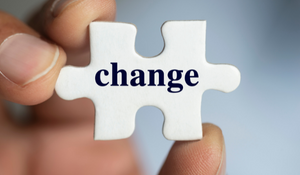 No police department killed George Floyd. One policeman did. Yes, others stood by and are responsible for valuing institutional loyalty over human life. But in the end, it was one individual policeman who committed this heinous crime.
No police department killed George Floyd. One policeman did. Yes, others stood by and are responsible for valuing institutional loyalty over human life. But in the end, it was one individual policeman who committed this heinous crime.
“People’s impressions of the police are influenced by the police. The greatest influence is [an individual’s] personal interactions and the personal interactions of their friends and families," says Darrel W. Stephens, MS, co-director of the Policing, Security Technology, and Private Security Research and Policy Institute at Florida State University.
Individual policemen interacting with individual community members are the core of the conflict. No police chief will keep his job who would condone racial harassment or violence against any community member. It is individuals who are unqualified to serve as policemen who are the core of the problem. And as one social work professor said to us off the record, "why do we have so many of these angry, violent men serving in our police departments across the country?"
"One thing I know is that by the time a police killing is happening, there are thousands of times that people have been stopped, people have been harassed. They’ve been profiled. Then, you get a police killing,” says Rashawn Ray, PhD, a senior fellow at The Brookings Institution and a professor of sociology and executive director of the Lab for Applied Social Science Research at the University of Maryland, College Park.
Systemic Change
Recruiting:
The image of the rough-tough gun-toting Old West sheriff who shoots bad guys on site is imbedded in America's cultural imagination. This is the artificial profile we hold up as our ideal law-enforcement professional to this day. Unfortunately, it was invented by Hollywood writers and never represented either true Old West history or the profile of an effective modern-day law enforcement professional. Many police recruits are ex-military who were trained to use weapons readily and to fight "bad guys" at the risk of their own life. This personality type is still considered a most desirable recruit. Most of them are excellent policemen but some are addicted to power and force and our psychological testing doesn’t sort out these exceptions.
Training:
Too often the training in community relations and respect for individual rights and personal dignity are left to the "Oh, and by the way" class in the police academy. If the system can be held accountable for the racism and violence that police are guilty of, it must start with training individual policemen/women in internalizing the "protect and serve" mission often painted on the side of police cars across the country. The key to turning the corner on police violence and racism is to recruit more carefully and test more deeply to weed out the bullies and to train each individual recruit in the true meaning of "to serve and protect".
Operations:
- Many years ago, police unions took policemen/women off "the beat" and out of the neighborhoods. The move was considered more efficient which proved to be true. But, by removing the "local" policeman/woman who everyone knew from the neighborhood, we set ourselves up for the growing mistrust that has separated the police from their constituents.
- High-crime neighborhoods get less police "patrolling" than high-end neighborhoods. This, of course, is exactly the reverse of what is needed. High-crime neighborhoods should be patrolled almost "block by block" until they are no longer considered "high-crime" neighborhoods.
- Unions must be convinced to take policemen/women out of patrol cars and put them back on the beat so that they get to know everyone in the neighborhood, and everyone gets to know them, even the criminals.
- One thing is certain: A positive relationship between police and communities benefits both parties. “It’s a given,” says Thomas G. Blomberg, PhD, Dean and Sheldon L. Messinger Professor of Criminology and executive director of the Center for Criminology and Public Policy Research at Florida State University. “If the police are able to develop good relationships with the community, that leads to trust and that leads to relationships [that are not one way]. The community will help the police, and the police helps the community.”
- Collaboration can and should extend beyond community input. The inclusion of mental health professionals and social workers in law enforcement can benefit community relationships. When Melanye Smith, PhD, a faculty member in Walden University’s MS in criminal justice program supervised a child welfare unit, a social worker and police officers responded to every call in which there was a possibility that a child was going to be removed from a home. It’s a concept that has expanded in recent years as it has become increasingly clear that police respond to many calls involving mental health crises.
Troubled individual policemen/women harass and murder individual citizens, not police departments. We need to do a much better job of recruiting, training, and supervising the brave men and women who protect and serve.
If you have enjoyed reading this blog, we have some other wonderful recommending readings that highlight the benefits of social workers working in collaborative roles:
Forensic Social Work...A Little Deeper Dive
Social Workers Fight for Juvenile Justice...Part 2 How We Got Here
Police Reform...Forensic Social Work

